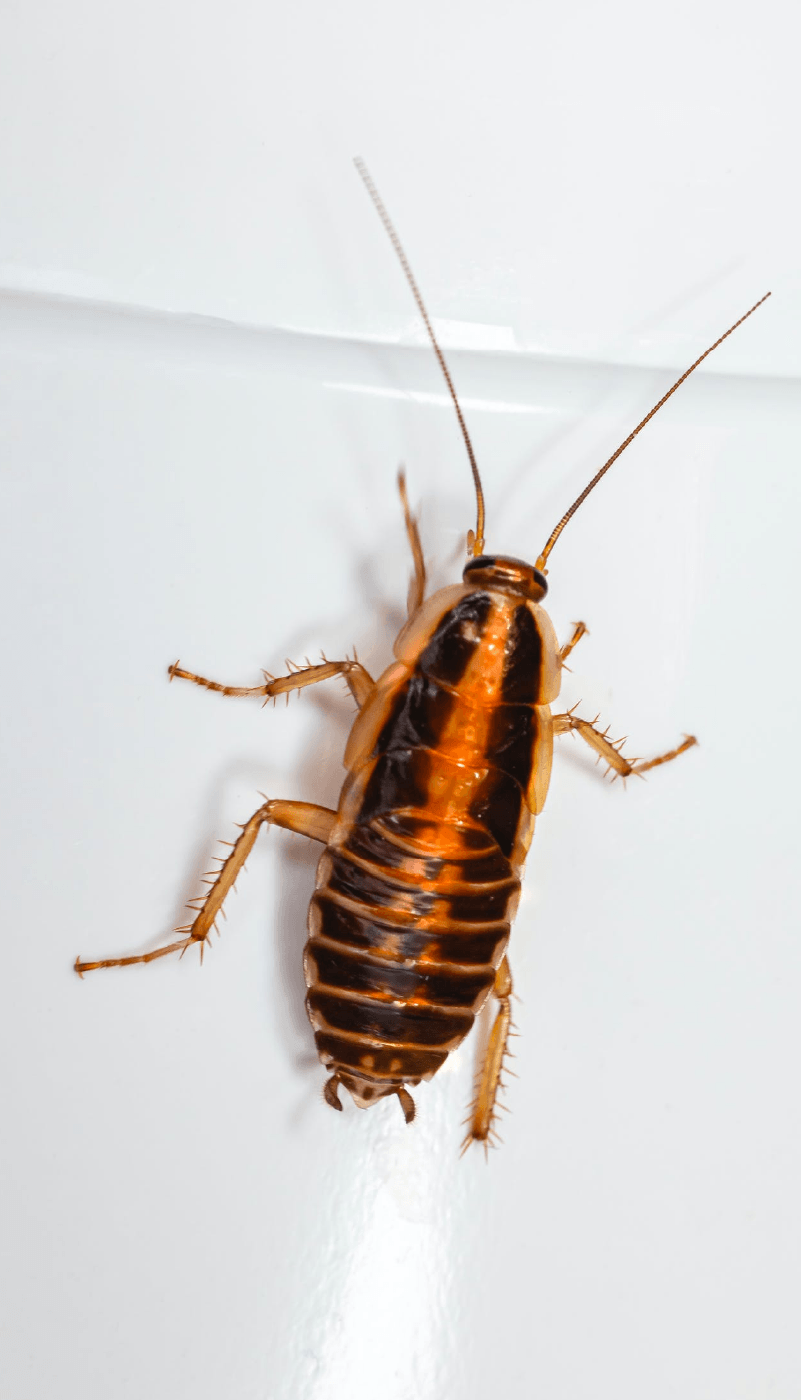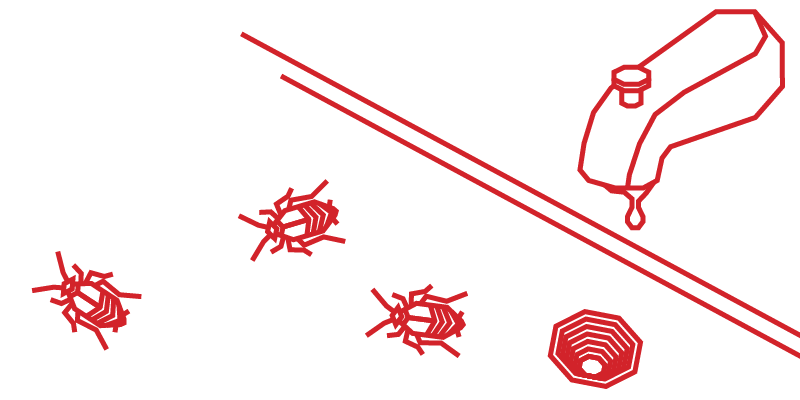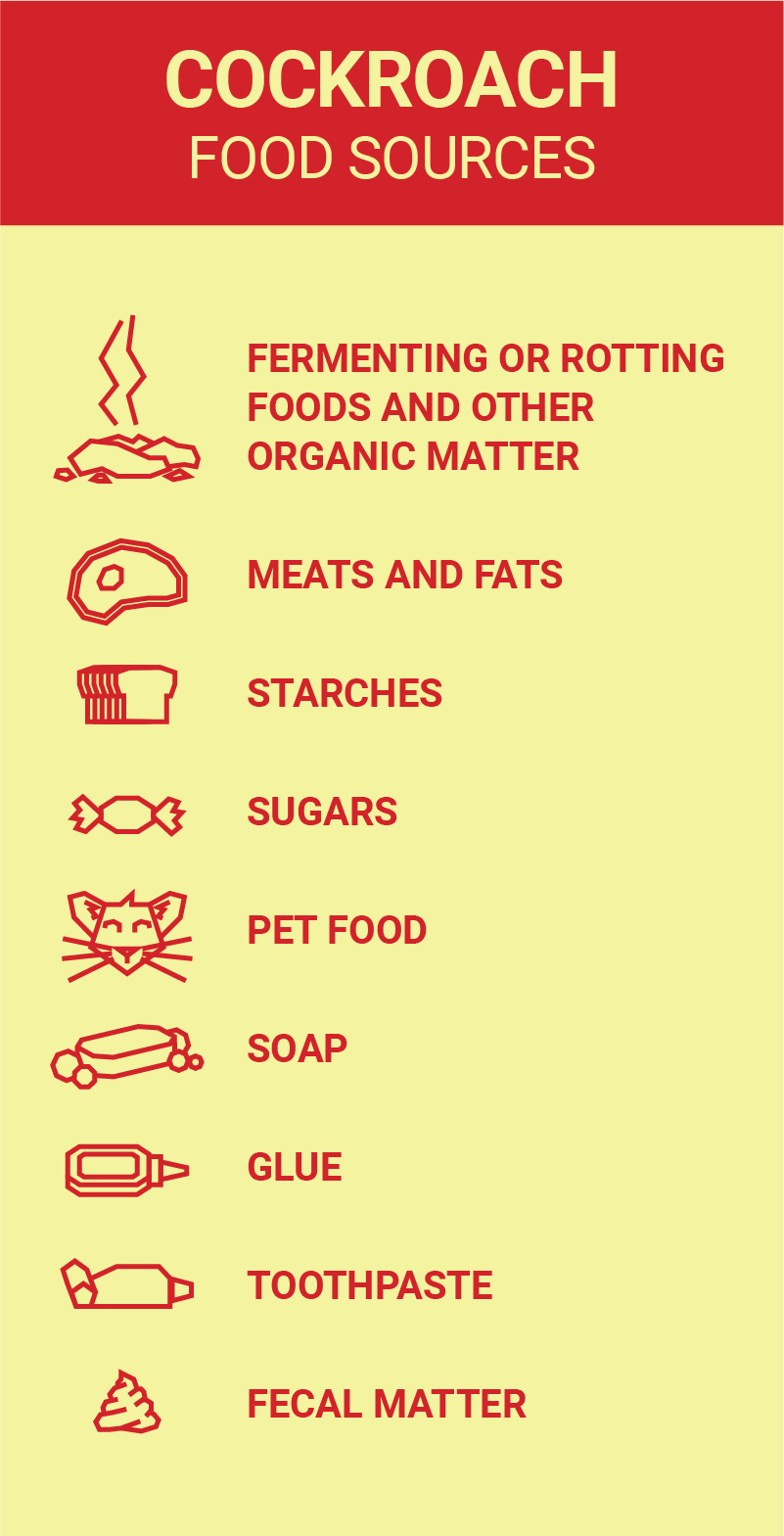Cockroach Food Sources
One of a cockroach’s favorite places to infest is the kitchen and pantry, much to the dismay of many homeowners and cooks. Because they’re so small and can move to practically anywhere they want, it’s easy not to see them until they start investigating food sources, dirty dishes, and prep stations. They make dark, out-of-the-way corners and spaces behind work surfaces and equipment into hiding places and then come out at night or whenever they won’t be disturbed to find leftover food, causing food poisoning and other health concerns.
Cockroaches will also eat almost anything they have access to, from the contents of your pantry to the contents of your trash can. They will consume:
- Fermenting or rotting foods and other organic matter
- Meats and fats
- Starches
- Sugars
- Pet food and water bowls
- Soap
- Glue
- Toothpaste
- Fecal matter
If you want to prevent roaches, the best thing you can do is wipe up food residue and do your best to keep a clean home. They are opportunistic, omnivorous pests and if you don’t carefully regulate your environment, they will find a meal wherever they can. Because of their hardy nature, they are also difficult to get rid of. However, while cockroaches can live for extended periods of time without food, they cannot live more than a week or two without water.
Learn More about What Cockroaches Eat




